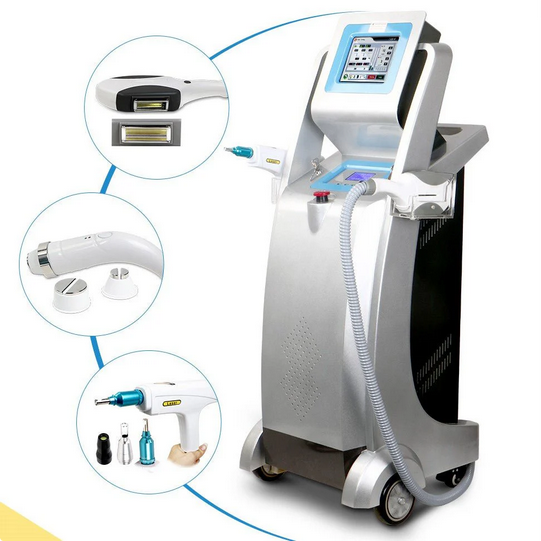Laser tattoo removal is a popular procedure for those looking to remove unwanted tattoos. With advancements in technology, a variety of laser tattoo removal machines are available on the market, each offering different features, benefits, and capabilities. Choosing the best laser tattoo removal machine involves understanding these options and determining which one will provide the most effective and safe results for your practice or personal use. This guide covers key factors to consider when selecting a laser tattoo removal machine, including types of lasers, technical specifications, patient safety, and overall effectiveness.
Understanding Laser Tattoo Removal Technology
Laser tattoo removal works by using high-intensity light beams to break down the ink particles in the skin. These particles are then naturally eliminated by the body’s lymphatic system. The effectiveness of the procedure depends on various factors, including the type of laser used, the ink colors, the depth of the tattoo, and the patient's skin type.
Types of Laser Tattoo Removal Machines
- Q-Switched Lasers: These lasers are among the most common and effective for tattoo removal. They emit short, high-energy pulses that shatter the tattoo ink into smaller particles. Q-Switched lasers are available in different wavelengths to target various ink colors. The most common types are:
- Q-Switched Nd: Effective for dark colors like black and blue, and also some red inks.
- Q-Switched Ruby: Primarily used for green and blue inks.
- Q-Switched Alexandrite: Suitable for green and blue inks, similar to Ruby lasers.
- Picosecond Lasers: These are advanced lasers that deliver energy in picoseconds (one trillionth of a second). They are more effective in breaking down ink particles into even smaller fragments, resulting in faster and more complete removal with fewer sessions. Picosecond lasers can target a broad spectrum of ink colors and are known for their efficacy in removing stubborn tattoos.
- Continuous Wave Lasers: These are less commonly used for tattoo removal due to the higher risk of skin damage and scarring. They emit a continuous beam of light, which can cause excessive heat buildup in the skin.
Key Considerations When Choosing a Laser Tattoo Removal Machine
Wavelength Versatility
The wavelength of a laser determines its ability to target specific ink colors. For comprehensive tattoo removal, it’s essential to choose a machine that offers multiple wavelengths or has interchangeable handpieces to handle different colors effectively. For example:
- 1064 nm: Effective for dark colors like black and blue.
- 532 nm: Targets red, orange, and yellow inks.
- 755 nm: Used for green and blue inks.
Pulse Duration
The pulse duration, or the length of time the laser energy is delivered, is crucial for effective ink fragmentation. Shorter pulse durations, such as those in picosecond lasers, provide more efficient ink breakup with less heat buildup, reducing the risk of skin damage and improving overall results.
Spot Size and Adjustable Settings
A laser’s spot size refers to the diameter of the laser beam. Larger spot sizes allow for faster treatment of larger tattoos, while smaller spot sizes are useful for precise targeting of intricate designs. Machines with adjustable spot sizes offer greater versatility in treating various tattoo sizes and designs.
Power Output and Energy Levels
Higher power output and adjustable energy levels enable deeper penetration and more effective ink fragmentation. Machines with a wide range of energy settings provide the flexibility to customize treatments based on the tattoo’s characteristics and the patient’s skin type.
Safety Features and Patient Comfort
Ensuring patient safety and comfort is paramount in laser tattoo removal. Look for machines that incorporate advanced cooling systems, such as:
- Cryogen Spray Cooling: Sprays a cooling agent on the skin before, during, or after the laser pulse to minimize discomfort and protect the skin.
- Contact Cooling: Uses a chilled handpiece that directly cools the skin during treatment.
- Air Cooling: Blows cold air on the skin to reduce heat and discomfort.
Training and Certification
Proper training and certification for operating laser tattoo removal machines are crucial for ensuring safe and effective treatments. Many manufacturers offer training programs and certification courses for their devices. Ensure that you or your staff receive adequate training to operate the chosen machine safely and efficiently.
Cost and Maintenance
Initial Investment
Laser tattoo removal machines vary significantly in price based on their technology, features, and brand. While picosecond lasers tend to be more expensive due to their advanced capabilities, they may offer quicker and more effective results, potentially reducing the overall cost of multiple sessions.
Maintenance and Warranty
Regular maintenance is essential to keep the machine operating efficiently and prolong its lifespan. Consider machines that come with comprehensive warranties and support services, including regular maintenance checks, technical support, and replacement parts.
Evaluating Clinical Efficacy and Patient Outcomes
Clinical Studies and Evidence
Review clinical studies and evidence supporting the efficacy of the laser tattoo removal machine. Reputable manufacturers often provide clinical data demonstrating the safety and effectiveness of their devices. Look for machines with a proven track record of successful tattoo removal treatments and positive patient outcomes.
Patient Reviews and Testimonials
Patient reviews and testimonials can provide valuable insights into the real-world performance of a laser tattoo removal machine. Look for feedback from patients who have undergone treatments with the machine you are considering. Positive reviews and high patient satisfaction rates indicate a reliable and effective device.
Conclusion
Choosing the best laser tattoo removal machine requires careful consideration of various factors, including wavelength versatility, pulse duration, spot size, power output, safety features, and cost. By understanding the different types of lasers available and evaluating their technical specifications and clinical efficacy, you can make an informed decision that ensures effective, safe, and efficient tattoo removal treatments. Investing in the right laser tattoo removal machine will not only enhance your practice's capabilities but also improve patient satisfaction and outcomes.





Comments